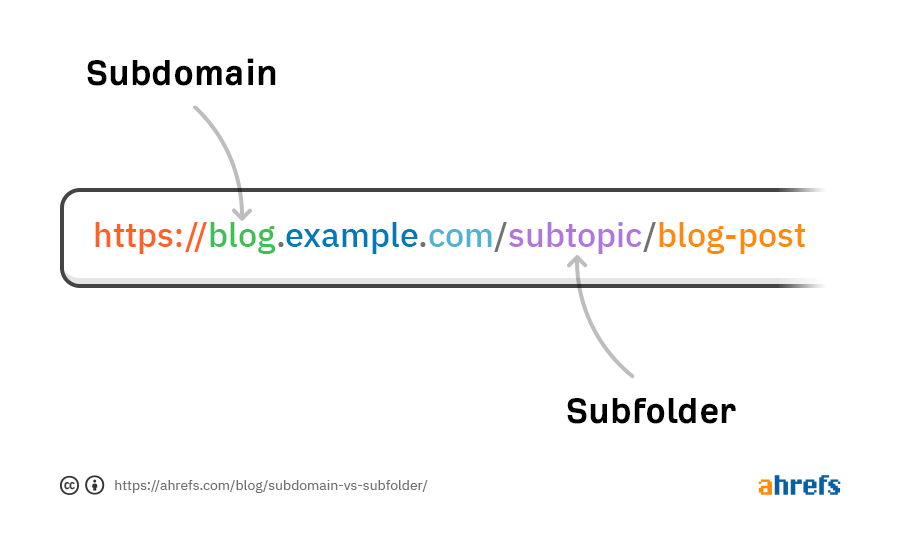
While searching for Domains for your website, you should know that a complete Domain name (unique website address) consists of protocol, subdomain, Domain name, Top-level Domain (TLD), subdirectory and path and page or file.
However, within the Domain Hosting and structure, every component plays an important part, the same as the subdomain. So in this article, we will dive more into the subdomain, the different types of subdomains, and their benefits.
What Is The Subdomain?
A prefix to a root Domain is a subdomain. It functions as a subset of the primary Domain, enabling website owners to organise better and manage their content.
Subdomains are mostly used to divide up and organise various website parts. This organisational structure offers several advantages and the capacity to manage various content categories more successfully.
While still being connected to the main Domain, each subdomain is allowed to have its distinct content, design, and functionality.
Suppose you have a website with an Australian Domain like “abcd.com” and the subdomain of this Domain could be “blog.abcd.com” or “shop.abcd.com.” In these instances, “blog” and “shop” are the subdomains, while “abcd.com” is the root Domain.
Types of Subdomain And Their Examples
| Type of Subdomain | Explanation | Example |
| Content Subdomain | Used to separate specific content sections or topics within a website, such as a blog or news. | blog.example.com, news.example.com |
| Departmental Subdomain | Helps to designate different departments or teams within an organization for specific purposes. | sales.example.com, support.example.com |
| Geographical Subdomain | Indicates different geographical locations or regions where a website caters to or operates in. | us.example.com, uk.example.com |
| Language Subdomain | Utilised to provide website content in different languages to cater to a multilingual audience. | en.example.com, es.example.com |
| Service Subdomain | Used to create subdomains for specific services offered by a website, such as an email or a shop. | mail.example.com, shop.example.com |
| Product Subdomain | Separates different products or product categories within a website for easy navigation. | iphone.example.com, shoes.example.com |
Benefits of Subdomains
- Improved Structure
Subdomains offer a logical structure to a website, making it easier to organise and categorise the content, services or features.
- Enhanced User Experience
It helps to enhance the user experience by separating the different sections into subdomains. Through this, visitors can navigate the website more easily and seamlessly. Also, each subdomain can have its own distinct design and user interface to create a customised experience.
- Scalability and Flexibility
Subdomains also offer the scalability for expanding the online business as you can easily add on Domains with subdomains as your website evolves to introduce the new service in all sections without disturbing the existing structure.
- Search Engine Optimisation
Search engines treat subdomains as a separate entity that gives the advantage of optimising each subdomain for the specific keyword, target audience, or geographic region.
- Targeted Functionality
Subdomains allow certain features to be linked to dedicated web addresses. It enables specialised functionality or targeted marketing, such as a mobile version of a website (m.example.com) or an API endpoint (api.example.com).
Conclusion
Subdomains are an effective tool for organising and managing website content, allowing website owners to create unique parts within their Domain while preserving a consistent brand identity.
Thus it is essential to search Domain name and then buy a Domain with an effective subdomain so you can use it to establish a robust online presence.
